Chuvash traditions and customs are associated with the worship of nature spirits, agriculture, seasons, family and continuity of generations. Today the population of the Chuvash Republic is modern democratic people who dress fashionably and actively use the achievements and benefits of technological progress. At the same time, they sacredly honor their culture and historical memory, passing it on from generation to generation.
Several generations in one house
Family is the main value for every Chuvash, therefore family values are revered sacredly. In Chuvash families, spouses have equal rights. Several generations living in the same house are encouraged, so families where grandparents, their grandchildren and great-grandchildren live under the same roof and lead a common life are not uncommon.
The older generation is especially revered. A child and an adult will never use the word “mom” in a sarcastic, humorous, or even more so offensive context. Parents are sacred.
Story
The ancestors of the modern Chuvash were the nomadic tribe of Savirs, or Suvars, who lived in the Western Caspian region since the 2nd century AD. In the 6th century, its migration to the North Caucasus began, where part of it formed the Hunnic kingdom, and part was defeated and driven out to Transcaucasia. In the 8th-9th centuries, the descendants of the Suvars settled in the Middle Volga region, where they became part of the Volga Bulgars. During this period, there was a significant unification of culture, religion, traditions and customs of peoples.
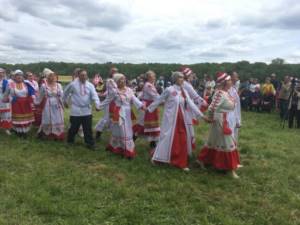
In addition, researchers note a significant influence on the language, objects of material and spiritual culture of the ancient farmers of Western Asia. It is believed that the southern tribes, who migrated during the Great Migration of Peoples, partially settled in the Volga region and assimilated with the Bulgarian-Suvar peoples. However, already at the end of the 9th century, the ancestors of the Chuvash separated from the Bulgarian kingdom and migrated further north due to their rejection of Islam. The final formation of the Chuvash people ended only in the 16th century, when the assimilation of the Suvars, Tatars from the neighboring Kazan kingdom and Russians took place. During the reign of the Kazan Khanate, the Chuvash were part of it, but they remained separate and independent, despite the need to pay tribute. Soon after the capture of Kazan by Ivan the Terrible, the Chuvash accepted the power of the Russian state, but throughout history they defended their rights. Thus, they participated in the uprisings of Stenka Razin and Emelyan Pugachev, opposed the arbitrariness of officials in 1571-1573, 1609-1610, 1634. Such self-will caused problems for the state, therefore, until the 19th century, a ban on blacksmithing was in force in the region to stop the production of weapons.
Wedding dresses
The family begins with a wedding, which is played cheerfully and on a grand scale. Residents from different regions of Russia come to see this action. According to national custom, the groom on the special day should wear an embroidered shirt and caftan, belted with a blue sash. Sometimes the sash is green.
On his head is a fur hat with a coin, and the young man is wearing boots. National costume for all seasons. The groom is prohibited from taking off his hat and caftan - he must wear them until the end of the wedding.
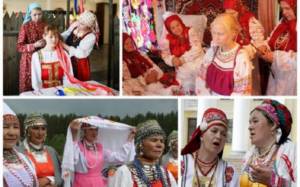
The bride's formal attire consisted of a shirt, an apron, and an embroidered robe. The head was decorated with a cap, hand-embroidered with beads and silver coins. There is a special cape on the shoulder, decorated with silver coins, and multiple decorations on the arms and neck.
There were so many decorations that they often weighed more than 2-3 kg. And the whole outfit weighed 15 kg or more. The coins were sewn on for a reason - when they moved, they emitted a melodious ringing, signaling the approach of the newlywed.
Popular message topics
- Cheetah
Now in modern times, everyone knows that the cheetah belongs to the cat family, and is also the fastest cat in the world. According to dozens of measurements by scientists, a cheetah is capable of reaching a speed of one hundred and twenty kilometers per hour in just three - National Parks
Many people, especially children, enjoy visiting parks. However, we are not talking about those places where children like to go on rides. There are areas where various animals are kept, fed and cared for. - Volga River
Russia is rich in beautiful places, forests and rivers. One of the largest rivers in all of Europe is the Volga. This amazingly beautiful and stormy river originates from the Tver region. It flows through several countries and regions,
Wedding customs
Many ancient traditions are found at Chuvash weddings today. Among them is the meeting of the groom.
- Guests and relatives of the newlywed gather in her house and wait for the groom at the gate. They greet him, as expected, with bread and salt, and also beer.
- In the courtyard, a table is set in advance for the guests - all those who arrived in the wedding cortege must sit down at it and drink to the health of the newlyweds.
- Weddings are celebrated for two days. The first day of fun takes place at the bride's house, on the second day the invitees move to the groom's parental home.
- In the morning after the celebration, the bride is put on a hush-pu - a headdress worn by married ladies.
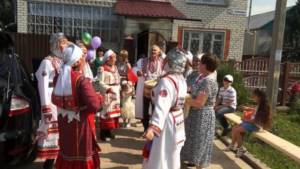
Name
The main version of the origin of the name is associated with the ancient tribe “Suvars” or “Suvazy”. It was first mentioned in the 10th century in the memoirs of the traveler of Arab origin Ibn Fadlan. The author wrote about a tribe that was part of the Volga Bulgaria and refused to convert to Islam. Some researchers believe that it was the Suvars who became the ancestors of the Chuvash, who went to the upper reaches of the Volga in order to avoid the imposition of an alien religion.
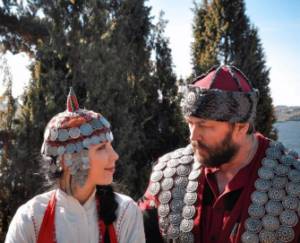
In chronicles, this name was first mentioned only in the 16th-17th centuries, during the period of the Chuvash Daruga joining the Russian state after the fall of the Kazan Khanate. One of the earliest evidence is the description of the mountain Cheremis (modern Mari) and Chuvash by Andrei Kurbsky, who spoke about the campaign against Kazan in 1552. The self-name of the people is Chavashi, which is considered the traditional definition of nationality. The name of the nationality in other languages is similar in sound: “chuash” and “chuvazh” - among the Mordovians and Tatars, “syuash” - among the Kazakhs and Bashkirs. Some researchers believe that the roots of the name and the people go back to the ancient Sumerians, but geneticists have not found confirmation of this theory. Another version is associated with the Turkic word javas, which means “peaceful, friendly.” By the way, such character traits, along with decency, modesty and honesty, are characteristic of modern Chuvash people.
A crying tribute
This ritual is a continuation of the previous one. While crying, the newlywed hugged relatives and friends, as if saying goodbye. She handed out a ladle of beer to each person who approached her. The guest threw coins at him.
The crying tribute lasted for several hours, after which the girl took out the coins and put them in her bosom. All this time the guests danced, amusing the hero of the occasion. Then the bride was taken to the chosen one’s house.
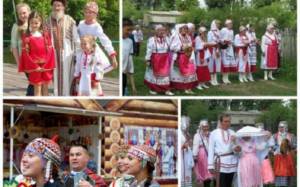
Housing
The Chuvash settled in small villages and villages, which were called yaly and were located near rivers, lakes and ravines. In the southern regions, the type of settlement was linear, and in the northern regions it was the traditional cumulus-cluster type. Usually, related families settled at different ends of the yawl and helped each other in everyday life in every possible way. The increase in population in the villages, as well as the traditional modern formation of streets, appeared in the region only in the 19th century. The home of the Chuvash was a solid house made of wood, for insulation of which straw and clay were used. The hearth was located indoors and had a chimney; the house itself had a regular square or quadrangular shape. During their neighbors with the Bukharans, many Chuvash houses had real glass, but in the future most of them were replaced with specially made glass.
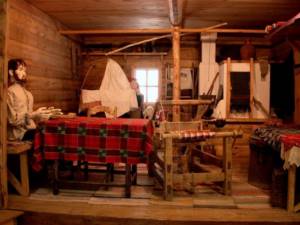
The courtyard had the shape of an elongated rectangle and was traditionally divided into two parts. The first contained the main living house, a summer kitchen with an open fireplace and all the outbuildings. Products were stored in dry cellars called nukhreps. In the back part they laid out a vegetable garden, equipped a corral for livestock, and sometimes there was a threshing floor there. There was also a bathhouse located here, which was available in every yard. Often an artificial pond was dug next to it, or they preferred to locate all buildings near a natural reservoir.
Strengthening the marriage
For three days after the wedding and the ceremonial banquet, the newly-made wife should not clean the house - the dirty work is done by relatives these days. The young wife thanks her with gifts. After the wedding, the daughter-in-law must give seven gifts to her mother-in-law.
In the first year, related families often visit each other. This is done for the sole purpose of establishing contact and strengthening kinship.
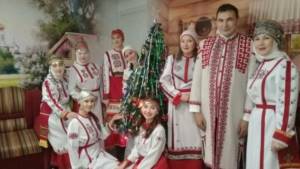
A week after the wedding, the newlyweds come to visit their father-in-law. Three weeks later - a second visit to him, and after 6 months already 12 people are coming to visit: young spouses, in-laws.
The duration of the last visit is 3 days. With treats, conversations, songs, dances. The young family received the rest of the dowry on this visit - livestock.
Kinship is one of the best and most sacredly revered traditions among the Chuvash. Perhaps this is why the families of the representatives of the people are strong, divorces occur much less frequently than among other nationalities living in the Russian Federation, and mutual understanding and connection between generations is not an empty phrase.
Culture and life of the Chuvash people
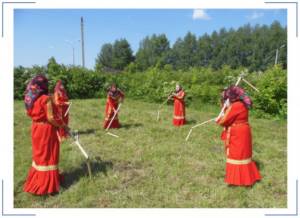
The main occupation of the ethnic group is agriculture. Judging by the research of historians, representatives of the nation have achieved good success in this direction and succeeded in it much better than the Tatars or Slavs. This is explained by the fact that the Chuvash lived in small villages located at a distance from large cities.
Working with land was the only way for people to get food. Therefore, no one shirked from household chores, and besides, the local lands were considered fertile and pleased the residents with a rich harvest.
Unfortunately, this was not enough to fully provide for the Chuvash and avoid starvation. The people specialized in growing crops such as rye, oats, barley, buckwheat and peas. Sickles, roe deer, etc. were used for work.
In ancient times, the Chuvash lived in small settlements, which were usually built near river valleys and lakes. The houses were lined up in a row or in a “clump”.
| The traditional dwelling of the ethnic group is the purt; it was erected in the middle of the courtyard and was considered the central building. You could also find a building called a lasa; it served as a summer kitchen. |
Life
Today, as throughout history, agriculture continues to play a major role in the life of the Chuvash. Since ancient times, people have been actively engaged in agriculture, using three-field or slash-and-burn systems. The main crops were wheat, rye, oats, spelt, peas, and buckwheat. Flax and hemp were grown to create fabrics, and hops and malt were grown to produce beer. The Chuvash have always been famous as excellent brewers: every family has its own beer recipe. For holidays, stronger varieties were produced, and in everyday life they drank low-alcohol varieties. Intoxicating drinks were produced from wheat.
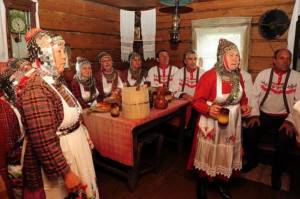
Livestock farming was not so popular because there was a lack of suitable forage land in the region. Households raised horses, cows, pigs, sheep, and poultry. Another traditional occupation of the Chuvash is beekeeping. Along with beer, honey was one of the main export goods to neighboring regions. The Chuvash have always been involved in gardening, planting turnips, beets, onions, legumes, fruit trees, and later potatoes. Among the crafts, wood carving, basket and furniture weaving, pottery, weaving and handicrafts flourished brightly. The Chuvash achieved great success in woodworking handicrafts: the production of matting, ropes and ropes, carpentry, cooperage, carpentry, tailoring, and wheelwork.
Famous Chuvash
One of the most famous natives of Chuvashia, born near Cheboksary, is the famous Vasily Ivanovich Chapaev. He became a real symbol of the revolution and a hero of national folklore: they not only make films about him, but also come up with witty jokes about Russian ingenuity.
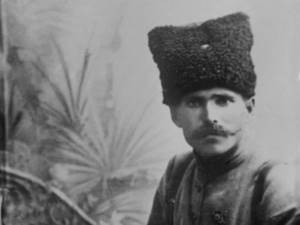
Andriyan Nikolaev, the third Soviet citizen to conquer space, was also from Chuvashia. His personal achievements include working in orbit without a spacesuit for the first time in world history.
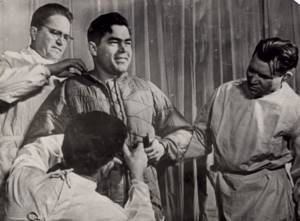
The Chuvash have a rich historical and cultural past, which they have been able to preserve to this day. The combination of ancient beliefs, customs and traditions, adherence to the native language help preserve authenticity and transfer the accumulated knowledge to new generations.
Religion
Today, more than half of the Chuvash formally profess Christianity, but there are still associations of adherents of traditional paganism, as well as religious syncretism. A few groups of Chuvash profess Sunni Islam. In ancient times, the Chuvash believed that the world was a cube, in the center of which were the Chuvash. Along the shores the land was washed by oceans, which gradually destroyed the land. It was believed that as soon as the edge of the earth reached the Chuvash, the end of the world would come. On the sides of the cube were the heroes guarding it, below was the kingdom of evil, and above were the deities and spirits of those who died in infancy.
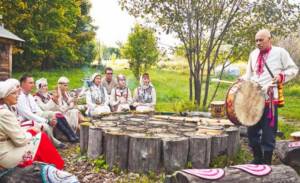
Despite the fact that the people professed paganism, they had only one supreme god, Tour, who ruled the lives of people, sent disasters to them, and emitted thunder and lightning. Evil was personified with the deity Shuittan and his servants - evil spirits. After death, they tormented sinners in nine cauldrons, under which they maintained a fire for eternity. However, the Chuvash did not believe in the existence of hell and heaven, just as they did not support the idea of rebirth and transmigration of souls.